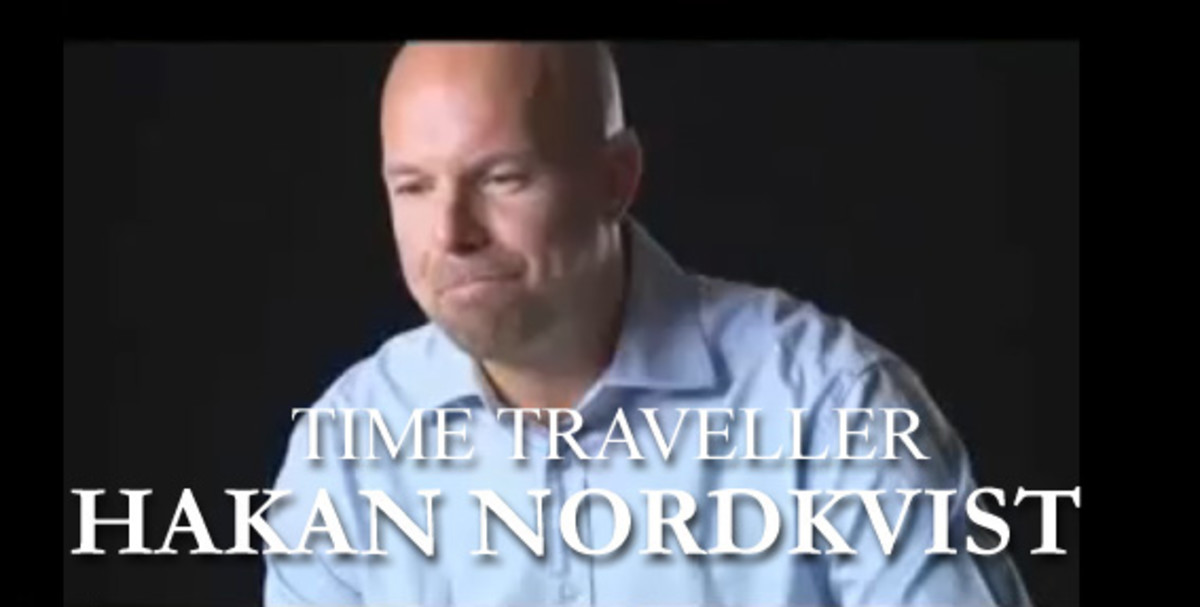Good Writing Is ... #2 The author's voice has no place in his work

First, a response to the emails I’ve received
Thank you for the response to article #1 in this series – most gratifying. Regarding the requests in my inbox that I review your work: I’d love to do this for you. But it is not appropriate for me to do so on hubpages, nor would either of us be comfortable going through the process publicly. So here’s what we’ll do: send me a copy of the work you want reviewed by email, and please embed the work in the body of the email – no attachments, and no more than 2,000 words please. I will use MSWord reviewing pane and give you the best overall edit and review I can, then send it back to your home email address. For the one or two who wrote and said they don’t know how to transfer work from their hubpage site: first, you should always keep a copy of your work on your home computer – who knows what may happen in the computer world; you may lose your creation. If you have not, go to your hub; put it in edit mode; using your clipboard, highlight and copy the body onto your clipboard; then, start an email to me and paste it in the email. (And keep a copy in your own files for posterity.) I am not comfortable with the suggestion I copy your hub and edit. A copy taken from a published hub will come up underlined, and secondly, it just doesn’t feel right. I’ll happily review submitted work, though.
A review of what we’ve covered so far
- Stay active in your writing. Avoid overuse of the passive voice.
- Show the reader what is happening, share the experience; don’t describe and ‘tell’ the story from a distance.
A common error for new writers is to insert the author’s voice into the story.
New writers want to “set the stage;” don’t. Let the stage become apparent as the story unfolds AND tell the story from the character’s point of view, not the author’s. (Two errors in one heading.)
“Come on,” Mary urged. She was an adventurous girl, with no fear of the unknown. “Let’s see what the storm left on the beach.”
“I don’t know.” Louise looked around, her face full of skepticism. She was more timid, and desired nothing more than the safety of her bedroom.
The storm had brought rain that lasted all night long, and the beach was now a quagmire, soft, wet and littered with debris. The sky, still grey and overcast threatened yet more rain. The waves rolling into the beach no longer shimmered green, but brown and soupy, full of the sediment stirred up by the downpour. The long beach, normally filled with vacationers enjoying nature’s bounty was empty of human life, except for two boys throwing a football, up above the tide line, on the grassy side of the newly piled driftwood, and dead kelp.
Not a bad descriptive passage, if I do say so myself, and it would suffice on its own if I intended to write a simple description of a beach after a storm. But, if I inject this into the middle of a story, it has the effect of stopping the action and injecting my own, the author’s voice. The days where a story is told by an omniscient, God-like narrator who not only describes the scenes but also knows what’s going on in everyone’s mind are long gone, and the all-knowing point of view has no place in the modern voice.
What worked in the style of Dickens, or Austen, is presumptuous by today’s standards.
What is wrong here? First, we start out with a bit of dialogue, but the action becomes cluttered with the author’s judgments on the characters. Yes, we may well want to know these things about the two girls, but we should be more subtle in how we impart this information to the reader – not as a pronouncement from on high. We’ll show the reader, not tell – remember?
Secondly, the descriptive passage, while brilliant (excuse me) stops us dead in our tracks, which would be particularly obvious were this an extract from an ongoing scene. How often in our reading do we come across long descriptive passages and skip over them in our haste to return to the story, the action? For most of us, the honest answer is many times.
Definitely, we want good, sparkling description in our work, but we need to present it as part of the story, as seen/heard/felt by our characters, not by us, the author. The exception to this rule may be if we use the first person narrative when our primary character makes all observations. (I saw ….) But even then, there are better, more digestible methods.
So now, I too, will show you what I mean, not tell. Let’s rewrite this passage with the above advice in mind.
“Come on,” urged Mary, boldly stepping off the boardwalk onto the beach. “Let’s see what the storm left behind.”
“I don’t know.” Louise looked around, the fear and uncertainty growing on her face as she surveyed the heaps of debris, the driftwood, tangled piles of dead and stinking kelp, the puddles sulking in depressions on the rain-soaked sand, and beyond, the soupy brown water, leaving lines of dark sediment behind each wave. She took one tentative step forward, and sank up to her ankle. “I’d rather stay home today.”
“Chicken.” Mary bent down and straightened up holding a large shell in her hand. “Look – isn’t this marvelous? Who knows what we’ll find. For heaven’s sake, Louise, try to find a bit of adventure in your soul, for once.”
“I don’t know,” she repeated, staring up at the sullen grey clouds in the sky. “It looks like more rain.”
Mary plodded slowly farther toward the water, her feet making sucking sounds as she pulled them from the quagmire of wet sand. Twice she lost her shoe, and finally ripped them off, threw them as far as she could toward the boardwalk, and continued slopping through the ooze in bare feet. “It feels wonderful. Try it.”
She glared at Louise, still standing with one foot in safety, the other slowly sinking, her arms crossed over her chest and flung up her hands in dismay. “Are you going to stand there all day?”
“There’s no one else out here.”
“They are.” Mary pointed at two boys throwing a football up on the grass, on the other side of the newly deposited wall of ocean debris.
“Yeah, well they’re on firm ground.” Louise pulled her foot out of the slop, and regarded the mud encrusted sneaker in dismay.
Now, is there any information from the first example not found here in the second? Isn’t the second far more palatable and engaging? You know why? We showed the reader that Mary is adventurous and Louise timid, and painted the backdrop of the scene in an unobtrusive manner. The reader doesn’t have to take the author’s word for it. The reader knows.
Here’s another example on a lovely piece by a new writer I’m editing now.
“I’m sorry; I just can’t help myself. I can’t stop drinking,” he said, slipping down in his chair and staring at his lap.
“You’re pathetic,” she exclaimed, staring at him. He was a mess, a pathetic, helpless weakling. She gave up. She wasn’t going to waste any more time on him.
What’s wrong here? Can you guess? The phrase, ’he was a mess, a pathetic….’ is a judgment inserted by the author. There are two ways to fix this. One would be to consider these as the female antagonist’s thoughts, at which point we need to inject something like ‘she thought’, and show those thoughts, which are really unspoken dialogue in italics (because that’s how we should write thoughts.) The way I edited this is as follows:
“I’m sorry; I just can’t help myself. I can’t stop drinking.” He slouched down in his chair and stared at his lap.
“You’re pathetic.” She rose from the table in disgust and left.
Doesn’t this impart the same message, but more powerfully and actively?
Conclusion
Keep your voice, opinions and judgments out of your story. Let the events unfold from the character’s point of view. Don’t play God and tell us what everyone is thinking, his or her character or their fate. This is not considered an acceptable point of view in modern writing, and let’s face it, even in those writings of the time where this was common practice, it comes off egotistical, presumptuous, and fusty, dry and preachy. Let your characters share their senses – tell it from their point of view.
I wish you all good writing, and remember:
- Stay active
- Show and share, don't tell and describe
- Keep you own voice out of the story.
- Let your characters do the work.
A link to my web home, and my writers' assistance pages
- Home
Sharing my work and passion for writing. My website offering editing, mentoring and coaching services for new writers and some of my current projects. - Good Writing Is ... #1 -- the two biggest mistakes made by new writers
Here are the two pitfalls made by new writers, and a new way to look at telling a story. - Good Writing Is ... # 3 What is the most important element of successful fiction?
Number 3 in the series on good writing asks the question: what is the most important element in successful fiction. The answer is good characters. Here we explore what makes good characters, how do we develop them and how to present them. - Good Writing Is...#4 Why new writers get lost and give up.
Many of you wrote in with comments like, "I'll drag out the old novel" or "I was working on a novel but grew frustrated and put it away." Why does this happen? Why do we so often abandon our work? Come in, and we'll explore those questions. - Good Writing Is...#5 The plot thickens -- plotting for beginners
#5 in the series, Good Writing Is... deals with plots and how to develop the plot in fiction, whether short story or novel. Called plotting for beginners, we discuss the form of plot, how to map a plot and how to prepare the plot for writing. - Good Writing Is...#6 -- Plotting #2 -- The Scene Approach
Welcome to this, the second in our lessons on plot structure. We are ready to take our proposed plot and divide it into scenes -- and then build those scenes. Let's construct a novel. - Good Writing Is...#7-- 10 common mistakes new writers make in writing dialogue.
No skill is more important to the fiction writer than a mastery of the mechanics of good dialogue. Here are the ten most common mistakes new writers make and how to avoid them. The ten rules of dialogue. - Good Writing Is ...#8 Point of view -- the five big questions writers need to answer
There are five big questions the writer needs to answer in developing the point of view of his work. - Good Writing Is...#9 The importance of voice #1 -- writing the child's perspective
The ninth in the Good Writing Is... series begins an exploration of 'voice' in writing. Today's discussion: writing from the child's perspective. The challenge of writing in the child's voice.
NEW!
- Good Writing Is... #10 What you need to understand about paragraphs
As promised, here is #10 in the Good Writing Is... series: everything you ever wanted to know about paragraphs; how to construct them, when to start a new one, what should be in one and how do they fit into the whole of our work both for essays and f






![Baltic Sea Anomaly Details: Is it a UFO or Hoax [video] Baltic Sea Anomaly Details: Is it a UFO or Hoax [video]](https://images.saymedia-content.com/.image/t_share/MTc2MjY0ODM3MjA1MjcxNzI1/baltic-sea-ufo-unidentified-submerged-object.jpg)